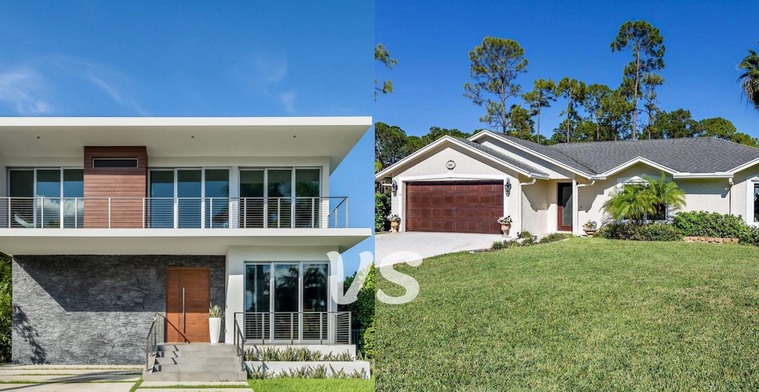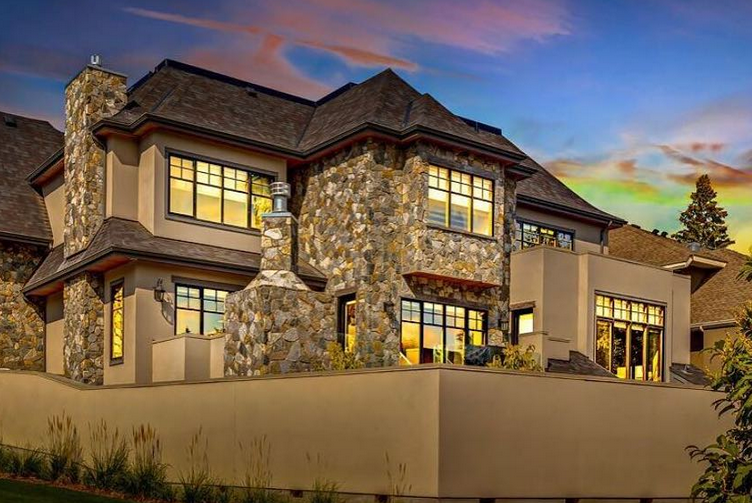When it comes to choosing the perfect home design, the debate between traditional and modern styles often arises. Both design aesthetics offer distinct characteristics, and each has its own appeal. Traditional architecture exudes a sense of history, warmth, and timeless charm, while modern design embraces clean lines, simplicity, and contemporary innovation. Here are some factors to consider when weighing the merits of traditional versus modern home design to find the perfect fit for your lifestyle and preferences.

Historical Context and Timeless Appeal:
Traditional home designs often draw inspiration from historical architectural styles, such as colonial, Victorian, or craftsman. These homes exude a sense of nostalgia and timelessness, appealing to those who appreciate the character and rich heritage that traditional designs embody. Distinctive features such as ornate moldings, pitched roofs, and intricate detailing add to the classic appeal of traditional homes.
In contrast, modern home design emphasizes a clean, minimalist aesthetic with an emphasis on functionality and technological advancements. The sleek lines, open floor plans, and integration of contemporary materials such as glass, steel, and concrete reflect the design ethos of the present era, appealing to those who prioritize simplicity, efficiency, and a connection to the latest design trends.
Lifestyle and Preferences:
When considering the perfect home design, it’s essential to align the architectural style with your lifestyle and personal preferences. Traditional homes often feature well-defined rooms, formal living spaces, and a sense of compartmentalization, providing a cozy and intimate setting that appeals to those who value a sense of privacy and separation between living areas.
Conversely, modern home design often prioritizes open, flexible layouts, emphasizing interconnectedness and a seamless flow between indoor and outdoor spaces. This design approach suits those who prefer an airy, light-filled environment and harmonious integration between different living zones, catering to contemporary living habits and a desire for fluid, adaptable spaces.
Integration with Surroundings:
In choosing a home design, it’s essential to consider the context and surroundings of the property. Traditional homes often complement established neighborhoods and historical districts, adding to the cohesive, familiar feeling of the area. Their timeless aesthetic and architectural details provide a sense of continuity with the existing built environment.
On the other hand, modern homes lend themselves to seamless integration with contemporary landscapes and new developments. Their clean, bold lines and innovative use of materials and technology may offer a striking contrast or a harmonious complement to the surrounding architecture, particularly in urban or suburban settings.
Individual Expression and Customization:
Consideration of individual expression and customization is key when selecting a home design. Traditional architecture provides a canvas for expressing personal style through rich textures, intricate detailing, and classic furnishings. This design style offers opportunities for customizing spaces with antique or vintage pieces and infusing character and warmth into the home.
In contrast, modern homes present a platform for personal expression through sleek, minimalist design elements, innovative technology integrations, and avant-garde furnishings. The contemporary aesthetic of modern homes invites individual creativity, enabling homeowners to curate a space that embodies their vision of modern living.
Conclusion
Ultimately, the choice between traditional and modern home design is a deeply personal one, influenced by individual tastes, lifestyle preferences, and the desire for a meaningful connection to one’s living space. Whether drawn to the timeless allure of traditional architecture or the clean, sophisticated lines of modern design, the perfect home is one that resonates with the homeowner’s values, reflects their personality, and provides a welcoming refuge for daily life.
